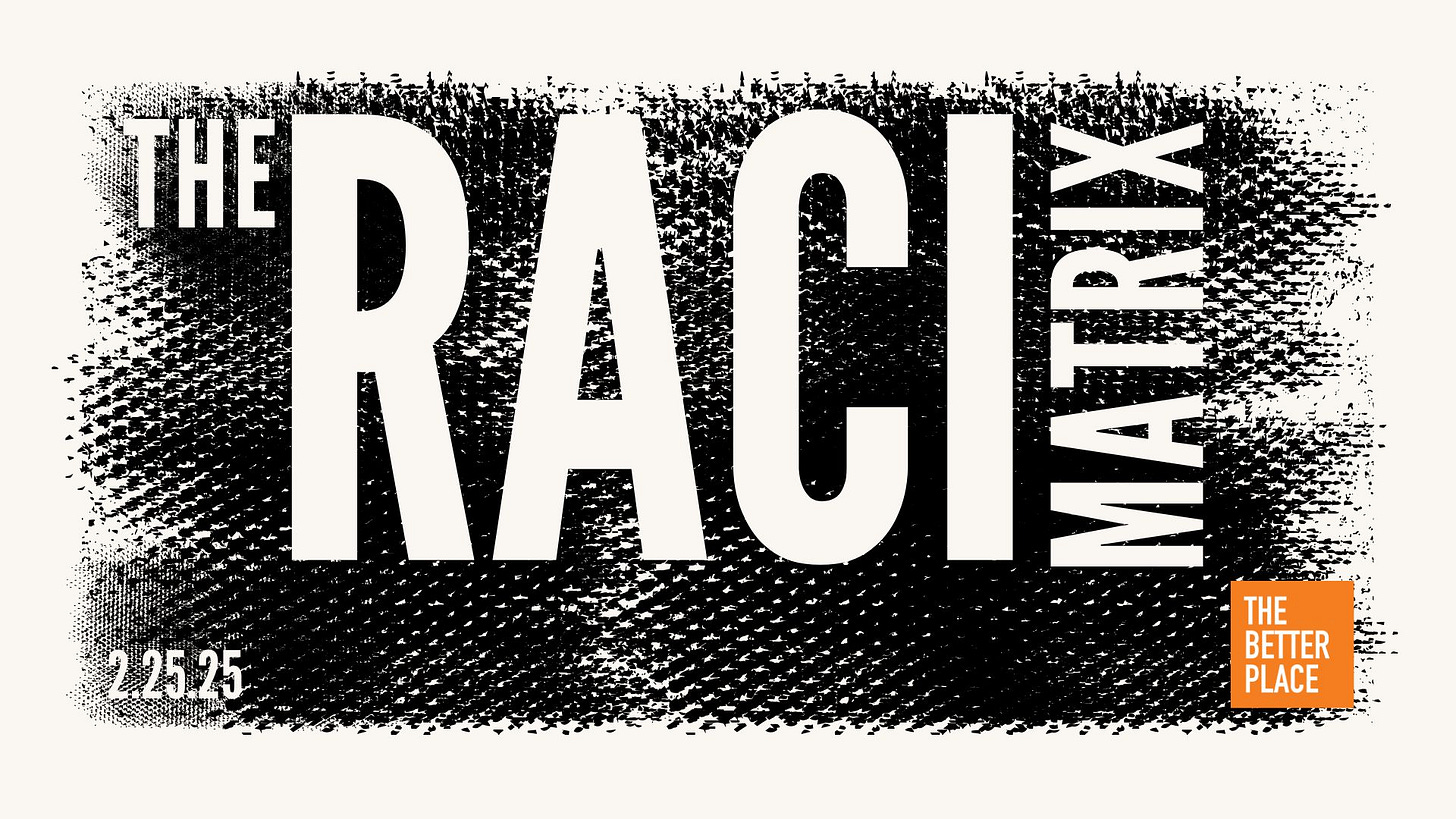In today’s fast-paced work environment, clear roles and responsibilities are crucial for project success. I mean…unless you’re not pursuing success, then maybe this isn’t for you, but if you want to succeed then keep going.
The reality is that many teams struggle with accountability, leading to confusion, missed deadlines, and inefficiency. This is incredibly common everywhere. And it seems to be getting worse because leaders fail to set the appropriate tools to fix it.
This is where the RACI Matrix comes in—a simple yet powerful tool that clarifies roles and keeps projects on track. It’s easy to learn and apply and will change everything for you if you do so correctly.
What is the RACI Matrix?
RACI stands for:
• Responsible – The person(s) doing the work.
• Accountable – The decision-maker who ensures the task is completed.
• Consulted – Those who provide input before execution.
• Informed – Those who need updates but aren’t directly involved.
That’s it. Someone right?
But why is this important? By mapping out these roles for each task or deliverables, teams get clarity, build better communication, and reduce bottlenecks. And let’s be honest, bottlenecks are annoying and can’t sometimes slow things down.
Example: Applying RACI to a Logistics Process
Let’s say a company is implementing a new inventory tracking system in its warehouses. Here’s how the RACI matrix might be applied:
In our example, we see that John is both responsible and accountable for finding new software and equipment while Maria is consulted, maybe because she is the purchaser and Jen should be informed as the boss.
Then we can see that Maria is both responsible and accountable for buying the new software and equipment while Jen the boss is consulted for potential approval.
Finally, the task of accepting delivery of the purchase is Maria's responsibility and he is also accountable for this task while Maria is consulted to confirm receipt of paid items and everyone is informed that the delivery is in.
Why Use RACI in Logistics?
This is going to prevent confusion by clearly assigning ownership to specific tasks and improves efficiency by streamlining decision-making. There is an immediate feeling is direction structure and guidance that comes with using this matrix as it enhances communication between department and reduces errors in complex logistics processes.
This is also true however in no logistics industries. So look for ways to implement in your field. But it isn’t there because all you have to do is swat the word logistics and you’ve got yourself massive tools for increasing performance and accountability regardless of your industry.
How to Apply the RACI Matrix?
1. Identify Tasks & Deliverables – List all key activities in your project.
2. Assign RACI Roles – For each task, determine who is Responsible, Accountable, Consulted, and Informed.
3. Communicate & Align – Ensure everyone understands their role to avoid confusion.
4. Review & Adjust – As projects evolve, update the matrix to reflect changes in responsibility.
By implementing the RACI Matrix, logistics teams can ensure smooth operations, minimize disruptions, and improve overall supply chain performance.
But it doesn’t end there because all you have to do is swap the word logistics and you’ve got yourself a massive tool for increasing performance and accountability regardless of your industry.
Thanks for reading! If you found value in this newsletter, consider supporting it by forwarding it to someone who needs it or becoming a paid subscriber.
-Ivan
Founder / CEO - The Better Place














Share this post